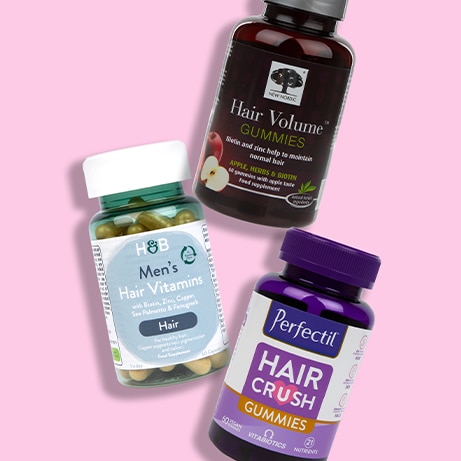15% off £25 or 20% off £35
Code:BASKET
Is retinol safe? What to know before you add it to your routine

Retinol has earned cult status for its results, but with great power comes great responsibility. Too much too soon can irritate – get it right and the benefits are worth the hype
Summary
1Is retinol safe to use?
Retinol is generally safe in low doses, but overuse can irritate. Start slow with a low strength and build up...
2Who should avoid retinol?
While retinol is generally considered safe, there are some situations where it might not be appropriate…
3Retinol precautions
Always check the label for the concentration of retinol in each product – recommended max is 0.3%...
Anti-ageing is a hot topic in the beauty world and retinol is one of the most popular active ingredients, backed up by clinical evidence.1,2 With options easily available at all price points, what’s not to like?
Well, despite its popularity, retinol (and other retinoids) can come with some common side effects like skin irritation. And don’t forget: cosmetic formulations you find on the shelf aren’t held to the same strict regulations as prescription treatments.1 Should you be concerned? We think not, but there are a few things to be aware of before picking out your next retinol serum or cream.

Is retinol safe to use?
While retinol is generally considered safe, there are some situations where it might not be appropriate.1 For example, it’s best to steer clear of retinol if you have delicate skin or are pregnant.1,3,5
When it comes to safety, it’s reassuring to know that even in cosmetic formulations, retinol has been clinically tested at different concentrations (up to 1%).1 However, the research isn’t as robust as for prescription-strength retinoids.1,3
If you have delicate skin – whether it’s prone to allergies, dryness or inflammation – retinol (and other retinoids) might not be your best bet. If you’re eyeing it to tackle moderate or severe acne scarring or if your acne is hormonal, be sure to consult with a dermatologist first.4
And if you’re pregnant? You should also avoid retinol.6,7 While topical retinol hasn’t shown clear risks, oral retinoids like tretinoin have been linked to adverse pregnancy outcomes. So, to be safe, it’s generally recommended to skip all retinoids while you’re pregnant – and use them cautiously when breastfeeding.1,5-7
Retinol can be safe for daily use once your skin has got used to it, but generally not when you first start. As retinoids can have a powerful effect on the skin, it’s best to start with a weaker formulation and gradually build up your tolerance.3
If you’re new to it, choose the lowest concentration of retinol you can find and ease it into your routine every other night. Going too strong too soon could lead to irritation – quite the opposite of what you’re aiming for.3
What precautions should you take with retinol?
Always check the label for the concentration of retinol in each product – the maximum recommended for topical face or hand products is 0.3%.1,8
And remember, as we mentioned earlier, the gradual introduction of retinoids is better for your skin than going straight in with the strongest dose.3
Make sure not to apply retinol-based products too close to your eyes, as this may cause discomfort and dry eye syndrome and steer clear of broken or sunburnt skin.1,7
Lastly, keep in mind that using topical retinol products can make your skin more sensitive to sunlight.7 For this reason, it’s best to apply retinol at night and always use a minimum of SPF 30 sunscreen during the day.3,6
This includes:3,9
- staying in the shade
- wearing a wide-brimmed hat
- applying sunscreen at the end of your skincare routine
Staying out of the sun will also protect you from ageing UV rays – that’s two birds with one stone.1
Ingredients and skin treatments to avoid when using retinoids
If you're using topical retinoids, especially stronger ones, it's best to be gentle with your skin.
Be mindful when pairing them with exfoliating ingredients like salicylic acid, alpha hydroxy acids (AHAs) or beta hydroxy acids (BHAs), as well as comedogenic or astringent products (any that are likely to clog pores) and abrasive cleaners.7 A little extra care will help keep your skin happy and healthy!
Some skin treatments are best avoided while using stronger retinoids, too. To look out for your skin, it’s a good idea to avoid wax epilation (as it can be harsh on the skin), dermabrasion and laser treatments (which may increase the risk of scarring) while using retinol and for at least six months afterwards.10
Retinol side effects and how to reduce them
Due to their chemical properties, retinol and other retinoids can come with side effects like skin irritation – often called ‘retinoid dermatitis’.1 These side effects are dose-dependent, meaning the stronger the retinoid, the higher the chance or irritation.1
It’s no surprise then that tretinoin, considered the most powerful option (and available by prescription only), is associated with the most side effects like itching, stinging and scaling.2
Retinol, about ten times less potent, tends to be more tolerable.1 That said, peeling and mild redness can still happen.2
The good news? These side effects are often short-lived and usually naturally resolve with time.2
If your skin feels too dry or irritated, try applying a moisturiser first (non-comedogenic, one that won’t clog your pores), wait 20–30 minutes, then follow up with your retinol.9
If you have darker skin, take extra care, as irritation can trigger hyperpigmentation. Starting slow and pairing retinol with a moisturiser can help keep your skin happy.4
Still experiencing irritation, even with a lower-concentration retinol? It might not be the right fit for you.1 In that case, it’s better to stop and consult a dermatologist to find other products that might work better for your skin.
The final say
Retinol can help address a variety of skin concerns and is generally considered safe based on the available evidence. However, if you’re pregnant it is best to avoid.1,3 Keep our tips and precautions in mind, and if you want to be extra sure, talk to a dermatologist first to see what works best for your skin.3
If you’re ready to dive into the world of retinols, why not check out our favourite plant-based retinol products?
Disclaimer - This article provides informational advice and is not a substitute for medical care. Curated by experts for accuracy, we take great care to ensure the information is up-to-date and relevant. However, you should always consult your GP or healthcare professional before using supplements or alternative products, particularly if you have medical conditions or are under supervision.
1. Milosheska D, Roškar R. Use of retinoids in topical antiaging treatments: A focused review of clinical evidence for conventional and nanoformulations. Adv Ther. 2022;39:5351–75. https://doi.org/10.1007/s12325-022-02319-7
2. Griffiths TW, et al. Skin ageing and topical rejuvenation strategies. Br J Dermatol. 2023;189:i17–i23. https://doi.org/10.1093/bjd/ljad282
3. American Academy of Dermatology Association. Retinoid or retinol? [Internet]. [cited 2025 Jan 23]. Available from: https://www.aad.org/public/everyday-care/skin-care-secrets/anti-aging/retinoid-retinol
4. Spierings NMK. Evidence for the efficacy of over-the-counter vitamin a cosmetic products in the improvement of facial skin aging: A systematic review. J Clin Aesthet Dermatol. 2021;14(9):33–40. https://pmc.ncbi.nlm.nih.gov/articles/PMC8675340/
5. Putra IB, et al. Skin changes and safety profile of topical products during pregnancy. J Clin Aesthet Dermatol. 2022;15(2):49–57. https://pmc.ncbi.nlm.nih.gov/articles/PMC8884185/
6. NHS. Acne. Treatment [Internet]. [cited 2025 Jan 24]. Available from: https://www.nhs.uk/conditions/acne/treatment/
7. NICE CKS. Acne vulgaris: Topical retinoids [Internet]. [cited 2025 Jan 24]. Available from: https://cks.nice.org.uk/topics/acne-vulgaris/prescribing-information/topical-retinoids/
8. European Commission. Directorate general for health and food safety. Revision of the scientific opinion (SCCS/1576/16) on vitamin A (retinol, retinyl acetate, retinyl palmitate). 2023 [Internet]. [cited 2025 Jan 23]. Available from: https://op.europa.eu/en/publication-detail/-/publication/53c49d56-46f5-11ee-bbdc-01aa75ed71a1
9. American Academy of Dermatology Association. Dermatologist-recommended skin care for your 20s [Internet]. [cited 2025 Jan 23]. Available from: https://www.aad.org/public/everyday-care/skin-care-basics/care/skin-care-in-your-20s
10. BNF NICE. Isotretinoin [Internet]. [cited 2025 Mar 14]. Available from: https://bnf.nice.org.uk/drugs/isotretinoin/












